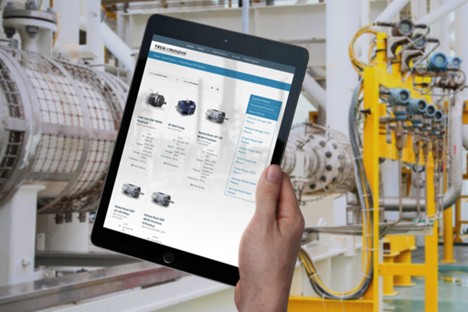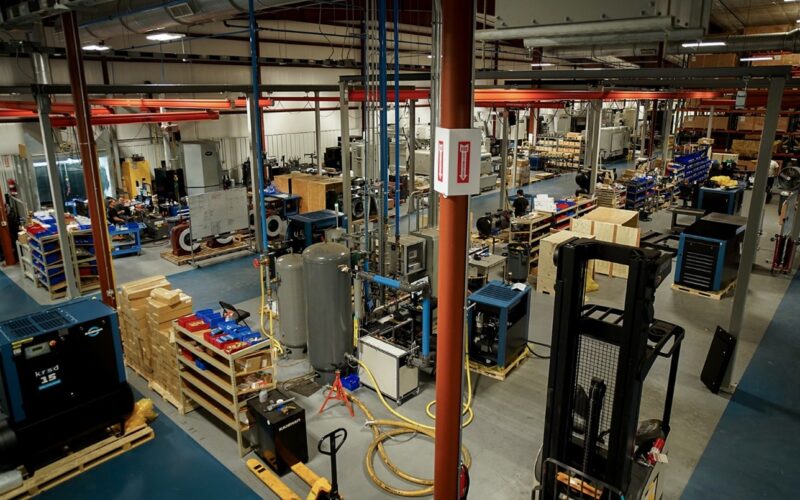Let’s get one thing straight: B2B marketing in industrial manufacturing can be traditional. Not because companies aren’t trying, but because they’re often operating with outdated strategies or a fundamental misunderstanding of how modern buyers behave. If your lead generation efforts aren’t delivering, it’s not because the market is slow—it could be that your approach requires a refresh.
Industrial marketing is not about blasting product specs at your audience and hoping they bite. It’s about trust. It’s about being the brand who understands your customers’ business better than they do. And it’s about building the kind of credibility that makes you the only logical choice when they’re ready to buy.
Manufacturing sales cycles are long, products are technical, and decisions are high-stakes.

Here’s how to do it right.
1. Focus on demand generation, not just lead capture
Too many manufacturing companies focus exclusively on capturing leads instead of creating demand. They prioritize collecting emails over building awareness and interest in their solutions.
Demand generation is about educating the market, getting in front of the right people before they’re actively searching, and positioning your brand as the expert they turn to when the need arises. It involves:
- Hosting insightful webinars featuring industry experts (not just sales pitches)
- Developing high-value, ungated resources that get shared and referenced
- Creating industry reports and data-backed insights that shape conversations
- Engaging in proactive community building in niche LinkedIn groups or forums
The companies that invest in demand generation today will dominate lead capture tomorrow.
2. Stop gating everything
Marketers love lead forms, but buyers don’t. If you force every single piece of content behind a form, you’re artificially reducing your reach and frustrating potential customers.
Gating high-value content—like in-depth reports or product demos—makes sense. But things like case studies, educational videos, and even some whitepapers should be freely accessible. The more friction you introduce, the fewer people will engage.
Use ungated content to warm up your audience. If they find real value in what you provide, they’ll be more likely to fill out a form when it actually matters.
3. Make better use of trade shows and industry events
Trade shows are still one of the best lead generation opportunities for manufacturers—but most companies do them wrong, leading to poor ROI. Instead of just setting up a booth and hoping for traffic, take a more strategic approach:
- Pre-schedule meetings with key prospects before the event
- Host a private event or roundtable discussion with decision-makers
- Invest in a high-impact live demonstration and exhibit assets, rather than passive displays
- Follow up with valuable content instead of generic sales emails

4. Leverage customer data to personalize outreach
Most manufacturing companies have access to more customer data than they realize—but they don’t use it effectively. Lead generation efforts often rely on broad messaging rather than tailored outreach based on real behavioral insights.
Use your CRM, email marketing tools, and website analytics to:
- Identify high-intent behaviors (such as repeated visits to specific product pages)
- Segment leads based on past interactions and industry needs
- Trigger automated, highly relevant follow-up sequences based on engagement
- Provide sales teams with intelligence to guide more personalized conversations
Personalization doesn’t mean just inserting a prospect’s first name into an email—it means delivering the right message at the right time based on their actual needs and interests.
5. Leverage your sales team’s knowledge
Your sales team knows exactly what questions and objections come up in conversations with prospects. This information is a goldmine for demand generation.
Instead of marketing and sales working in silos, align them. Create content that directly addresses:
- Common objections (and how to overcome them)
- Key concerns at different stages of the buyer’s journey
- The decision-making process (who’s involved, what they care about)
Sales teams have firsthand intelligence on what really matters to buyers. Use that data to refine your messaging, content, and overall marketing approach. Plus, you’ll make friends on the other side of the aisle, too.
6. Optimize your website for conversions
Your website is your most powerful sales tool, but too many manufacturing websites are outdated, cluttered, and unclear on how buyers can take the next step.
- Simplify navigation so visitors can find what they need in seconds
- Improve landing pages with clear, compelling calls-to-action (CTAs)
- Use chatbots or live chat to capture high-intent leads in real time
- Implement conversion tracking to measure what’s actually driving form fills

7. Use paid ads intelligently
Paid advertising is often an afterthought for B2B manufacturers, but when used strategically, it can drive serious results. The key is precision targeting.
Google Search Ads can put your business in front of buyers actively searching for solutions. LinkedIn Ads let you target the exact job titles you want to reach. And retargeting ads can keep your brand top-of-mind for those who have visited your site but haven’t converted yet.
And lest we forget about Microsoft/Bing, one of the most undervalued PPC platforms for industrial marketers from a cost-per-lead (“CPL”) perspective!
Throwing money at broad, untargeted campaigns is a waste. But if you craft your messaging around real buyer pains and use precise targeting and visuals, paid ads can be a game-changer.
Final thoughts
Most manufacturing companies are still stuck in outdated lead generation models—relying on cold outreach, generic content, and one-size-fits-all marketing. The modern industrial buyer doesn’t operate like that anymore. They research deeply, trust peer recommendations, and expect real value before they ever engage with a sales rep, especially if the product / service they need requires a high degree of consultation.
Winning in industrial demand generation means shifting from a transactional mindset to an educational one. It means meeting buyers where they are, addressing their pain points proactively, and positioning your brand as the go-to expert in your industry.
This is where industrial marketing agencies come in. A strong agency understands industrial markets, buyer psychology, and the tactics that actually work. Whether it’s refining your messaging, optimizing your campaigns, or executing high-performing content strategies, they bring the expertise needed to turn leads into real revenue.
If your lead generation efforts aren’t delivering, it’s time to rethink your approach. Because the companies that adapt will dominate the ones that don’t.





